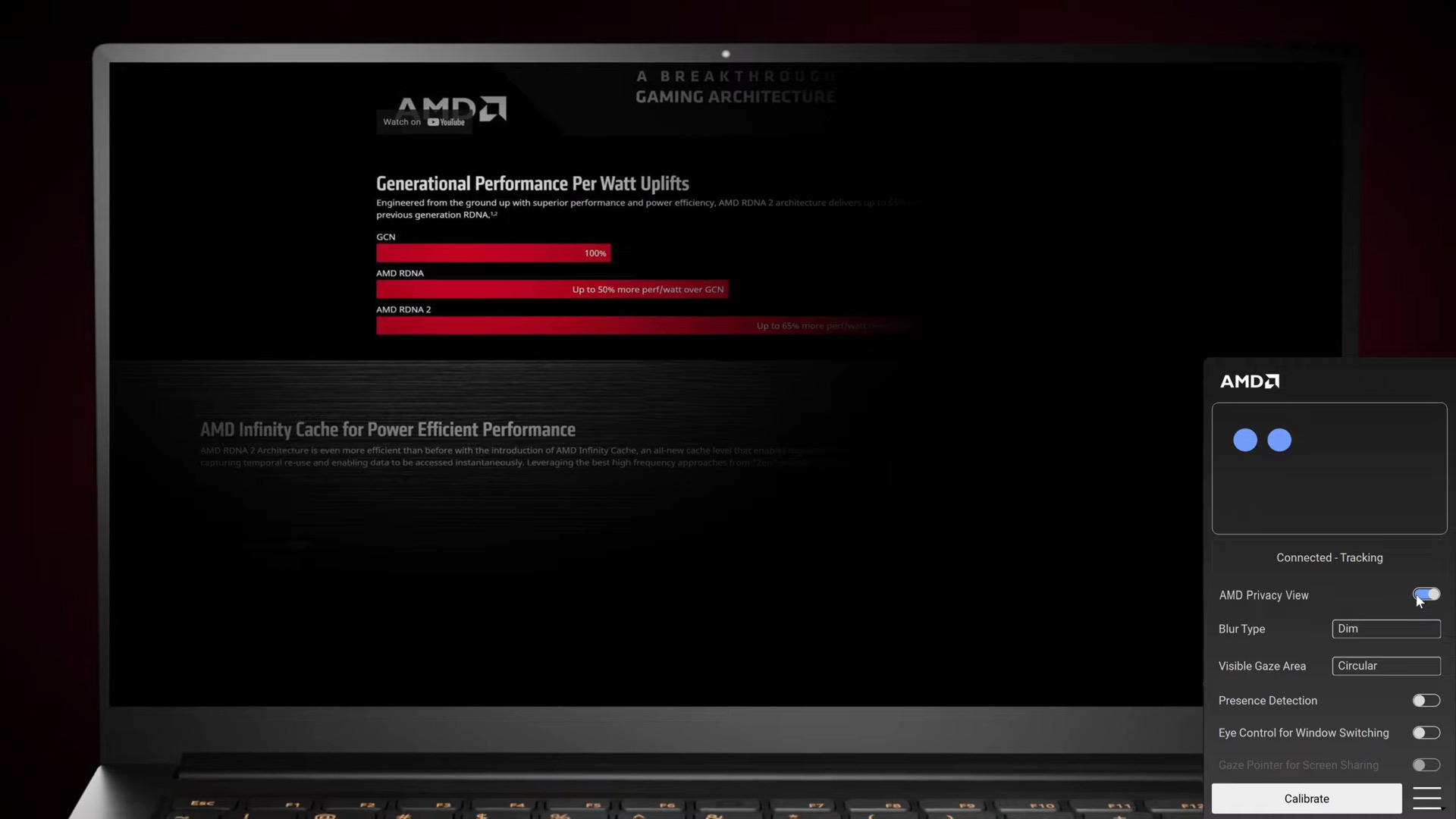AMD's Radeon Privacy View Designed to Nix Shoulder Surfers
Your system will need a webcam for eye tracking
AMD briefly mentioned Privacy View for Radeon graphics cards at CES 2022. Now it has released a fuller exposé of the technology, which is designed to minimize the opportunities for shoulder surfers or other office snoops to check what's on your screen. AMD Privacy View has been designed in partnership with Eyeware of Switzerland.
If you've looked into eye tracking previously, some use cases and applications have required expensive dedicated or higher-end hardware for this kind of technology to be effective. AMD has partnered with Eyeware of Switzerland for its Radeon Software Privacy View, as it only requires a standard webcam — and a Radeon GPU, naturally.
In the video above you can see a laptop user in a busy public place toggle on the AMD Privacy View feature. The brief clip shows that, once enabled, the section of the screen central to your gaze remains clear, while the rest of the monitor is cast into darkness. This obscuring of the screen contents could be pretty effective against a casual snooper.
Privacy View isn't a simple on or off choice, a pop-up control panel offers controls over variables like blur type and visible gaze area/shape. Furthermore, users can use the eye tracking tech for user presence detection, window focus switching, and using a gaze pointer when screen sharing. Last but not least, AMD and Eyeware have all-important calibration tools available via the control panel.
If you are curious about the technology behind AMD's Privacy View, dev partner Eyeware says that it uses "patent-pending computer vision algorithms and machine perception AI to enable remote head pose and gaze tracking for consumer device integrations." The tech is platform independent, but as an AMD driver feature, it will be restricted to Radeon GPU use. The first driver featuring Privacy View is slated to arrive sometime in H1 2022.
Technology Potential Beyond Privacy
Last but not least, this might be only the beginning of AMD and Eyeware collaborations in adding features to the Radeon driver. Interestingly, Eyeware's pages suggest this same tech can be a big positive for immersive gaming. It already has an Android/iOS app where you can purpose your smart device as an eye and head motion tracker for PC gaming. This could be folded into Radeon Drivers to use a PC / laptop webcam as a neater solution.
There's also the potential (not discussed yet) to use the technology for something akin to foveated rendering, where the area of the screen you're looking at gets rendered at a higher resolution than the rest of the display. We're speculating here, and integrating that sort of thing — and integrating it well — would prove difficult, but there are plenty of future use cases for this type of technology.
Get Tom's Hardware's best news and in-depth reviews, straight to your inbox.

Mark Tyson is a news editor at Tom's Hardware. He enjoys covering the full breadth of PC tech; from business and semiconductor design to products approaching the edge of reason.

